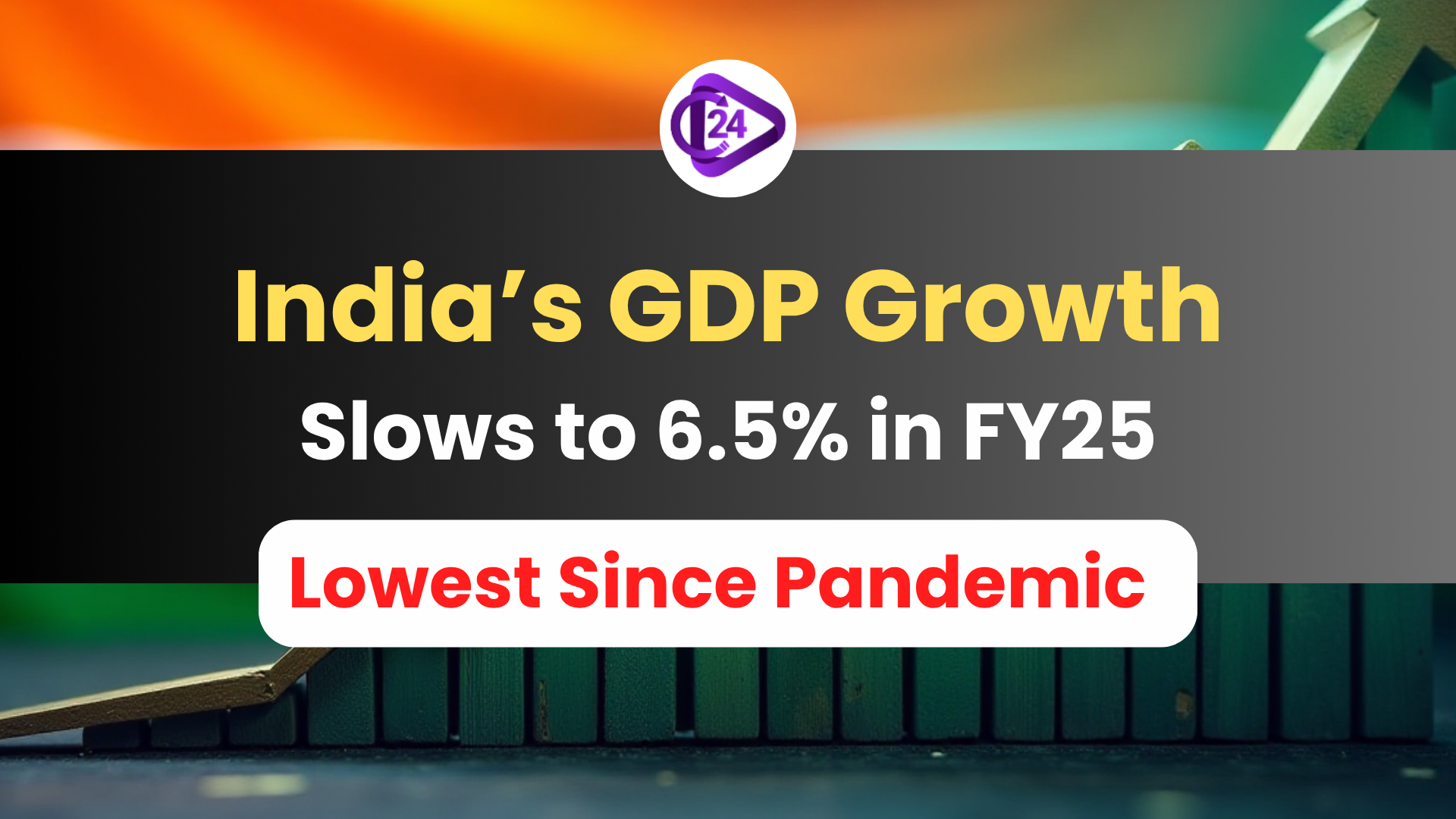
India’s GDP growth in 2024-25 slowed to 6.5% since the pandemic year of 2020-21 which was due to both global and domestic problems. While the economy grew by 7.4% in the fourth quarter (Q4), it is still slower than what was seen in Q4 2020. The agriculture and construction sectors did well, yet manufacturing displayed weaker growth. Spending by households increased which helped drive the economy forward. The economy is slowing down thanks to worldwide turmoil related to trade friction and international concerns.
Context:
-
India’s GDP growth slowed to 6.5%
-
In 2024-25, India’s GDP growth slowed to 6.5% which was its lowest since the pandemic.
-
It was the strong showing of agriculture and construction that helped Q4 growth reach 7.4%.
-
Key Points:
-
Quarterly Change in GDP:
-
Q3 growth reached 6.4%.
-
The economy grew by 7.4% in the 4th quarter which was the fastest in 2017 yet below last year’s 8.4%.
-
-
Sectoral Performance:
-
Agriculture: continuing to grow which adds to the strength of the economy.
-
Manufacturing: Grew by 4.8% in Q4, down from 11.3% last year’s Q4.
-
Construction: Returned to double-digit growth at 10.8% in Q4, highest in the fiscal year.
-
-
Household Consumption:
-
An improvement in economic activity that grew from 5.6% to 7.2%, showing consumers are spending more.
-
-
Expert Opinion
-
The Chief Economic Adviser pointed out that India’s economy handled growth well in a tough global climate which was different from advanced economies.
-
Common Economic Terms
Definition of Gross Domestic Product(GDP)
-
Gross Domestic Product (GDP) is the overall value of goods and services made by the country within its borders during a specific time, commonly measured over one financial year.
-
It counts all products made by companies, foreign or local, inside the country.
-
The GDP figure is built up by Consumption (56%), Investment (32%), Government Spending (11%) and Net Exports (exports - imports).
Nominal GDP vs Real GDP
|
Basis of Comparison |
Nominal GDP |
Real GDP |
|
Definition |
GDP measured at current market prices |
GDP measured at constant prices, adjusted for inflation |
|
Inflation Effect |
Includes the effect of inflation |
Excludes the effect of inflation |
|
Indicates |
Change in both price and quantity of output |
Change in only quantity of output |
|
Used For |
Comparing current economic size |
Measuring real economic growth over time |
|
Example |
Higher Nominal GDP can be due to price rise |
Higher Real GDP shows actual increase in production |
Formula: Nominal GDP = Real GDP × (Price Index / 100)
GVA (Gross Value Added) vs GDP (Gross Domestic Product)
|
Basis of Comparison |
GVA (Gross Value Added) |
GDP (Gross Domestic Product) |
|
Definition |
Measures value of goods/services after subtracting input costs |
Measures total market value including taxes and subsidies |
|
Formula |
GVA = GDP - (Taxes - Subsidies) |
GDP = GVA + (Taxes - Subsidies) |
|
Focus |
Shows sectoral output efficiency |
Reflects overall economy’s performance |
|
Used By |
Analysts for sector-wise analysis |
Governments for budgeting, policy, and national accounting |
|
Key Component |
Pure production value |
Production + Net tax revenue |
Formula: GDP = GVA + Taxes – Subsidies
FY25 Economic Projections:
-
Nominal GDP: ₹324 lakh crore (increase about 9.7%).
-
Real GDP at market prices: ₹184.9 lakh crore (adjusted for inflation).
-
Sectoral Growth:
-
The agriculture sector experienced a growth of 3.8% (which is 2.4 points higher than before).
-
Manufacturing fell to 5.3% in 2022, from 9.9% in 2020.
-
Construction contributed 8.6% of the economy this year, a drop from last year’s rate of 9.9%.
-
The services sector expanded by 7.2% mainly driven by the activities related to public administration and financial services.
-
Challenges:
-
Private consumer and investment spending has grown more slowly since FY20.
-
Tight management of government budgets reducing demand for new spending.
-
Trade deficit is still a problem, even though it has narrowed in some months.
Conclusion:
A GDP growth of 6.5% might raise concerns, but solid agriculture, construction and growing spending show that India’s economy is still stable. If India focuses on further boosting manufacturing and infrastructure development, it might recover and enjoy future sustainable and inclusive growth.
UPSC Prelims Practice Question
Q. Which of these two makes the best explanation of the distinction between Nominal GDP and Real GDP?
- A) Nominal GDP is affected by inflation, but not Real GDP
- B) Taxes and subsidies are part of Real GDP but do not affect Nominal GDP.
- C) Current prices are used to find Nominal GDP, while constant prices are used for Real GDP
- D) Real GDP measures inflation, whereas Nominal GDP looks at how much output is available.
UPSC Mains Practice Question (for GS Paper III)
Q. "A slowdown in India’s GDP growth to 6.5% this year is due to problems both internationally and within the country." Analyze how different sectors are faring and propose ways to support both inclusion and growth. (250 words)



 MCA21 Portal: Streamlining Corporate Compliance in India
MCA21 Portal: Streamlining Corporate Compliance in India India’s Rice and Tea Exports Disrupted by Iran-Israel Conflict
India’s Rice and Tea Exports Disrupted by Iran-Israel Conflict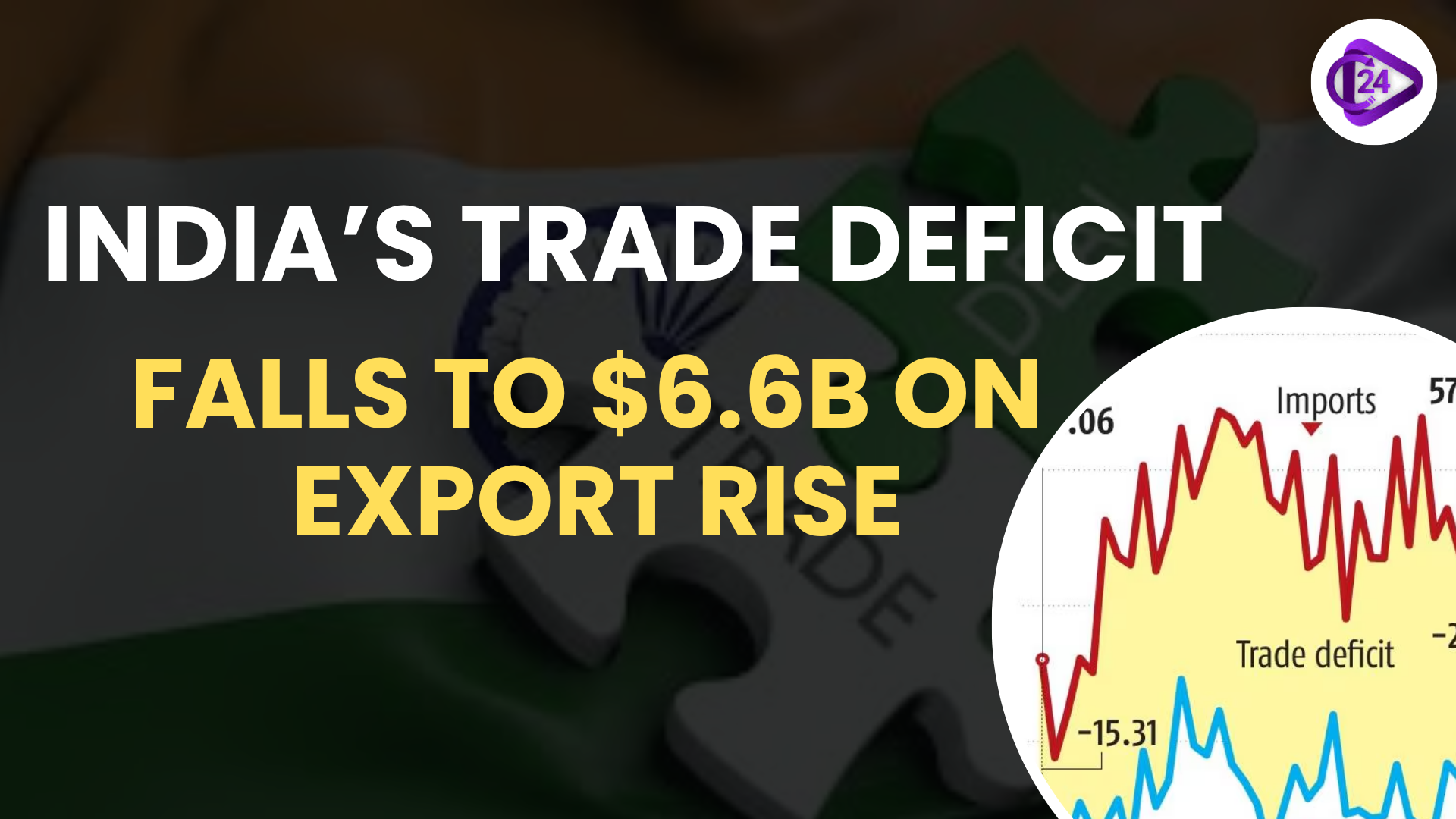 India’s Trade Deficit Narrows to $6.6 Billion Amid Export Growth
India’s Trade Deficit Narrows to $6.6 Billion Amid Export Growth India’s Population Reaches 146.39 Crore, Fertility Rate Drops Below Replacement Level: UN Report
India’s Population Reaches 146.39 Crore, Fertility Rate Drops Below Replacement Level: UN Report QCI Commemorates World Accreditation Day 2025 and Launches Revamped NABL Portal
QCI Commemorates World Accreditation Day 2025 and Launches Revamped NABL Portal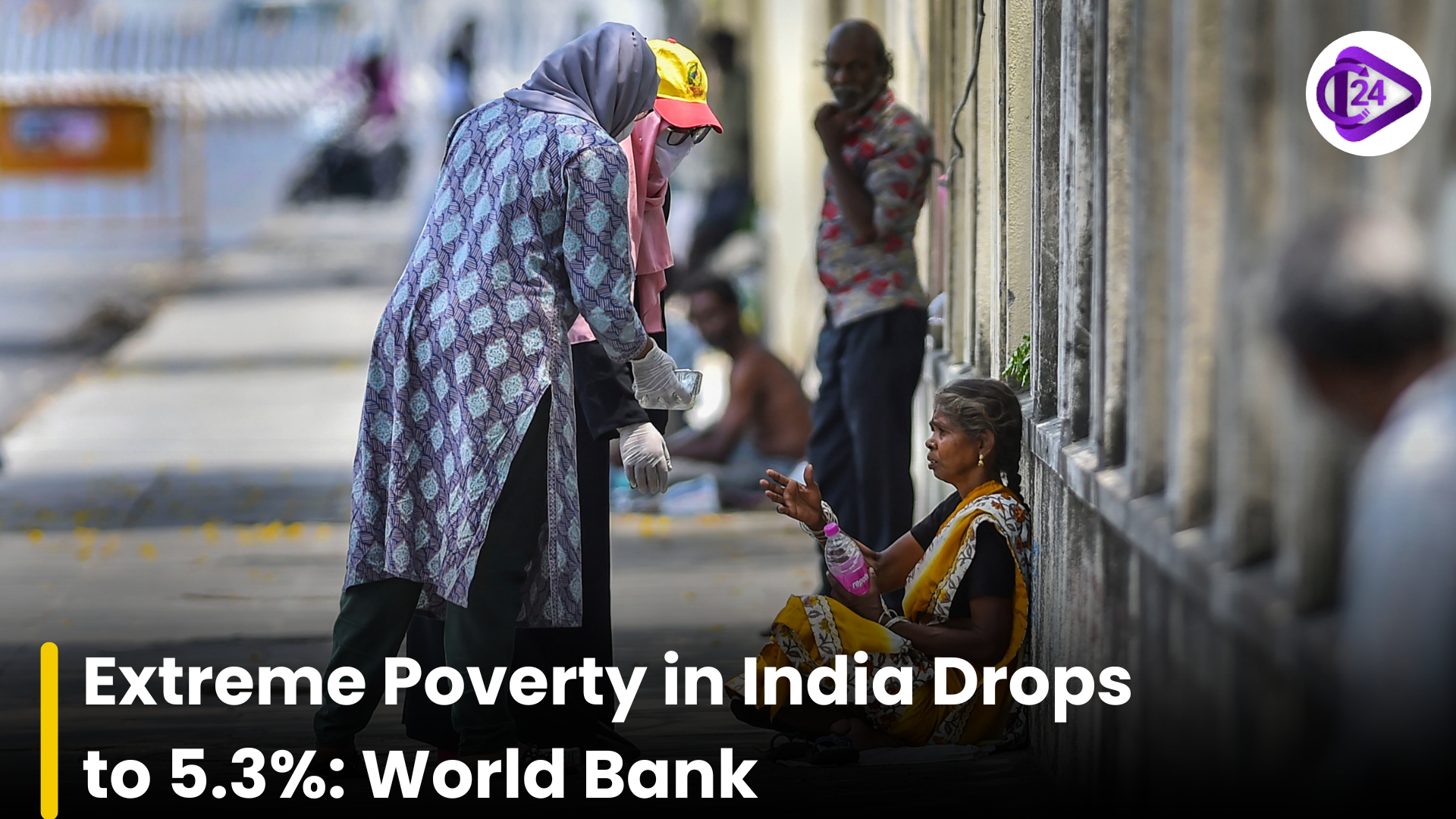 Extreme Poverty in India Falls to 5.3% in 2022–23: World Bank Report
Extreme Poverty in India Falls to 5.3% in 2022–23: World Bank Report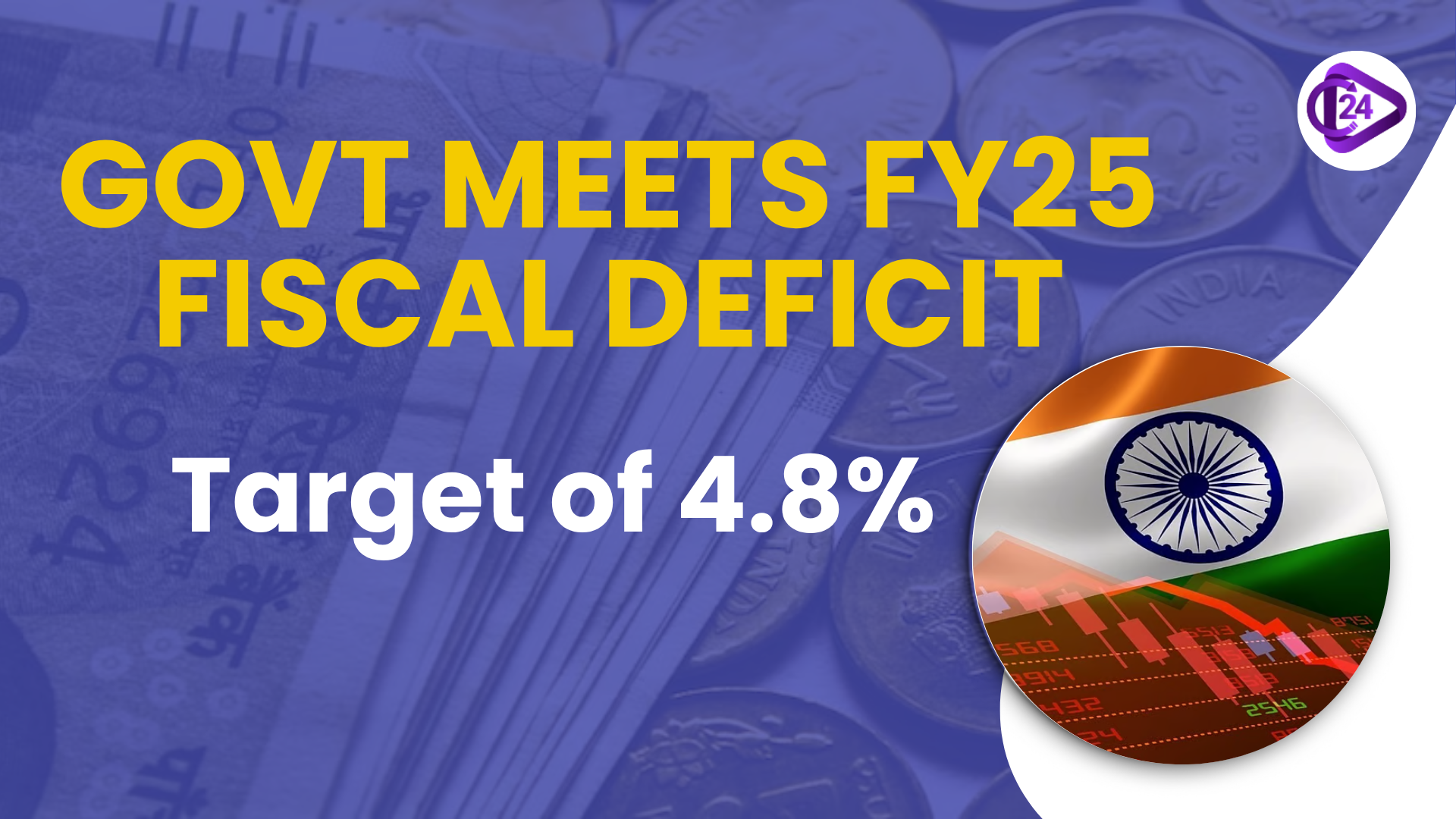 Government Meets Fiscal Deficit Target of 4.8% of GDP for FY25 Amid Revenue Shortfalls
Government Meets Fiscal Deficit Target of 4.8% of GDP for FY25 Amid Revenue Shortfalls PM Modi Declares Successful Production of India’s First Chip at a Semiconductor Factory in the North
PM Modi Declares Successful Production of India’s First Chip at a Semiconductor Factory in the North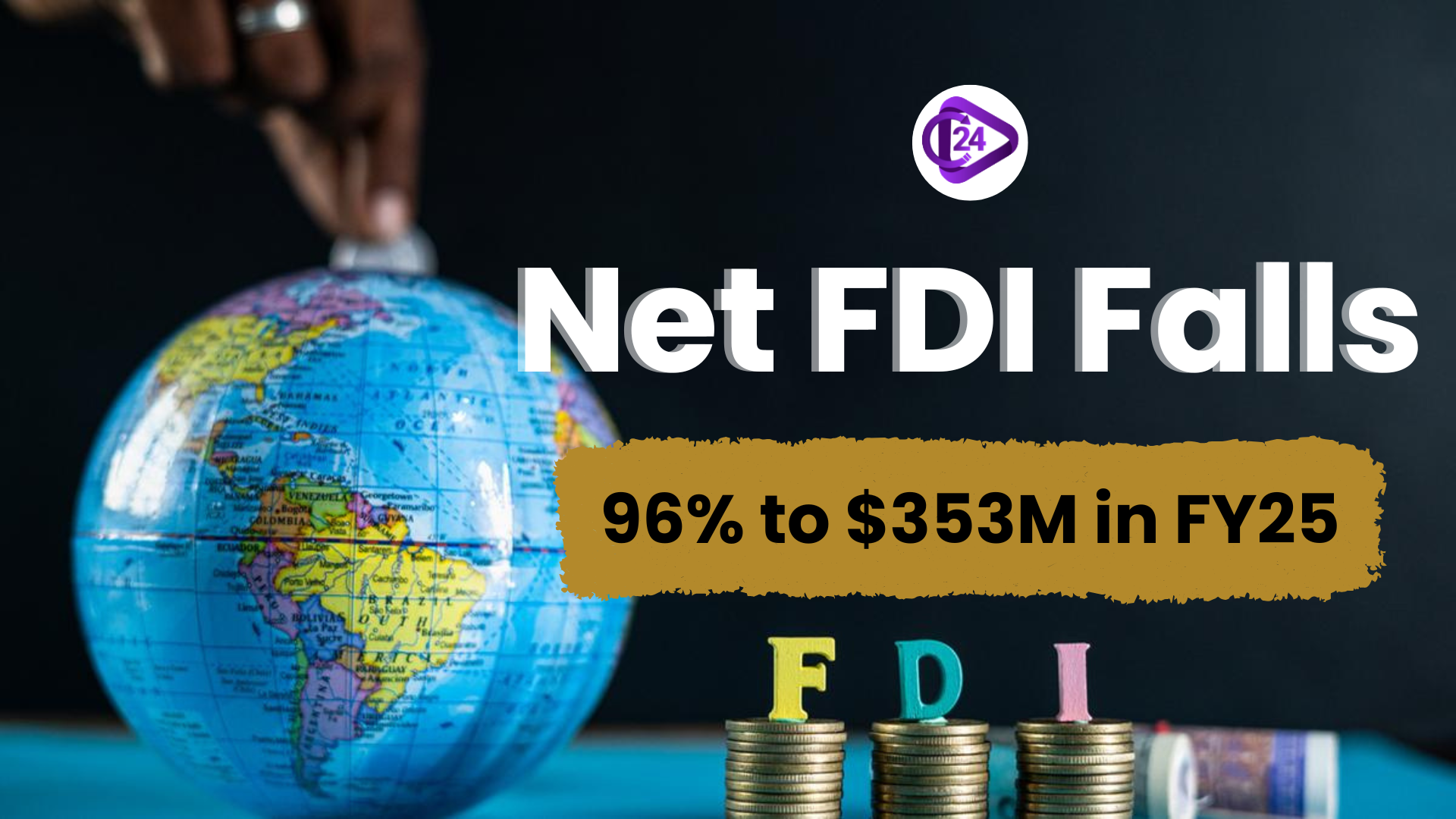 In FY25, net FDI fell sharply by 96%, despite a strong year for total investment inflows.
In FY25, net FDI fell sharply by 96%, despite a strong year for total investment inflows.






